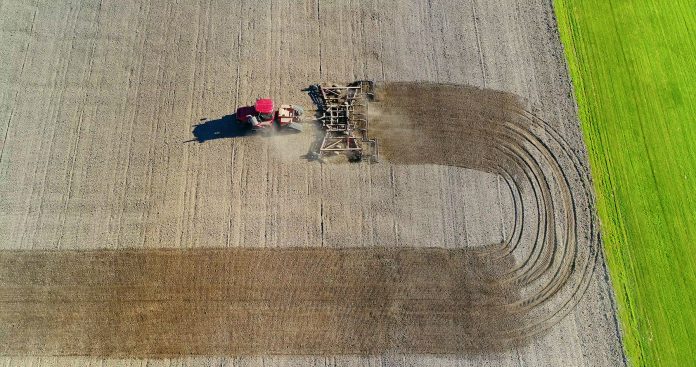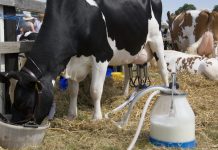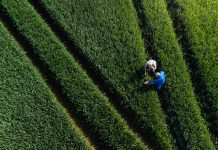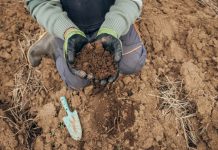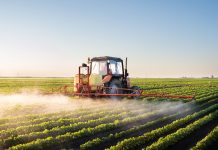After a brief look at food safety from the view of FAO, we caught up with Laimonas Noreika, Co-Founder and CEO of HeavyFinance, about the natural capital landscape within agriculture and much more
In the view of the Food and Agriculture Organization (FAO), food safety is of utmost importance due to the high number of foodborne illnesses each year, estimated at around 600 million cases.
These illnesses not only pose a threat to human health but also impact economies globally. FAO believes that ensuring food safety is crucial for achieving food security and safeguarding the well-being of individuals. Additionally, it promotes access to domestic, regional, and international markets.
To strengthen food safety systems, national, regional, and international efforts are needed, FAO state. This includes improving regulatory capacities for food control, facilitating global trade, and developing institutional and individual capabilities. It is also essential to have effective mechanisms in place for managing food safety emergencies.
According to the FAO, science-based food safety governance is essential for making informed decisions and establishing sound food safety policies. This involves relying on expert bodies like JECFA and JEMRA to provide scientific advice for setting food safety standards. Such governance supports efforts at national, regional, and international levels.
FAO tells us that improving food safety along food chains is vital to preventing diseases and trade disruptions. Supporting developing countries in implementing risk-based food safety management and complying with Codex texts is essential. Factors such as national and local production systems must be considered to ensure food safety.
Food safety platforms and communication play a significant role in networking, dialogue, and global access to information. They facilitate effective communication internationally and address key food safety issues. The FAO say these platforms also collect, analyse, and communicate food chain intelligence to ensure the safety of the global food supply.
The FAO, therefore, plays a crucial role in ensuring global food safety and quality through the development of global standards and regulations, for example. FAO also aims to protect consumers from foodborne illnesses and ensure the availability of safe and nutritious food.
However, numerous challenges exist in achieving this goal, such as inadequate infrastructure and the need for more awareness. Nevertheless, with future initiatives and innovations, FAO strives towards a safer and healthier food system for all. (1)
Recently, Open Access Government spoke with Laimonas Noreika, Co-Founder and CEO of HeavyFinance, about agriculture, the primary source of our food supply. We learn about the natural capital landscape within agriculture, the importance of sustainability, and challenges in the field.
How advanced is the natural capital landscape within agriculture?
Conventional agriculture is the most significant contributor to the shortage of natural capital that provokes land use change and contributes to the degradation of it. The acceleration of climate change has heightened human awareness of the vital role that natural capital plays in our daily lives on the planet.
Agriculture remains the primary source of our food supply, and the thin 10-15 cm top layer of soil is the crucial tool used in its production. By comprehending natural cycles, we can alter agriculture’s impact on degradation and contribute to climate change mitigation and the resilience of the food supply chain.
Agriculture plays a significant role due to its direct impact on the land and the considerable effect on downstream industries. Farmers are already profitably following several on-farm possibilities to address these issues, such as regenerative and precision agriculture, agroforestry, water-efficient agriculture, or natural fertiliser alternatives.
Still, due to the downstream sectors’ influence, any significant change would need permanent behavioural and operational changes from players, starting from end buyers to food industries.
Natural capital is the critical resource of the 21st century, and our future prosperity heavily depends on the land-use decisions we make. The Global Environment Facility estimates an annual biodiversity finance gap of $300 billion to $400 billion. This highlights the need for increased investments in biodiversity conservation, habitat restoration, and the protection of endangered species.
In 2014, a senior UN official shared that there are only 60 harvests left before the world’s topsoil is degraded to the level of not being suitable for agriculture. Looking from today’s perspective, I have much more hope for humanity. I see many positive changes in creating climate-friendly legislation and shifting to sustainable soil management practices to save our planet. We already have standards and data collection capabilities that play a vital role in understanding and improving natural capital.
I can’t stress enough the importance of small and medium farmers in the combat against climate change. Considering improvements in agriculture, the adoption of conservational soil management practices has been on the rise in Europe and the UK.
Over the past couple of years, I visited many grain farmers in Central and Eastern Europe, and most of them have been using organic fertilisers in at least part of their fields. Crop rotation and cover crops also gained popularity, as farmers took the scientific insights about the benefits of storing more organic carbon in the soil very seriously.
What is activity like around biodiversity and investments in agriculture?
According to the World Bank, sustainable agriculture requires an annual investment of $80 billion to meet the global demand for food by 2050 while reducing environmental impacts.
We foresee that investments in sustainable agriculture will be heavily facilitated by corporations interested in offsetting their CO2 emissions, either by buying Carbon Credits directly in the voluntary market or financing the change to sustainable practices and earning as compensation the Carbon Credits sequestrated by no-till soil management practices.
Simultaneously, the discussed methods will be instrumental in preserving biodiversity.
Due to rigorous carbon sequestration measuring methodologies for agriculture, additionality, and long-term impact, corporations and institutional investors favour soil carbon credits. We estimate a significant price and volume increase in soil credits in the next ten years.
By building an extra revenue stream for farmers, carbon credits also increased the interest in the sector from investors in debt capital.
Besides being a project proponent generating carbon credits, we are also originating medium-term collateralised green loans for small and medium-sized European farms, and we see increased interest from institutional investors with tickets of €30- 100 million.
Agriculture: What are the challenges?
Some primary challenges come from the need for more standardised agricultural investment products for institutional investors.
I believe that the EU made a significant and bold move implementing Article 9 dark green funds, but I’m concerned to see all the scepticism over it coming from the largest fund managers. Complying with the criteria of Article 9 SFDR is challenging, and there could be more clarity from the EU, but climate change is an emergency, and we must act rapidly.
Another challenge is the persistent low liquidity of the voluntary carbon credits. The lack of standardisation in the voluntary carbon market raises uncertainty about the price and liquidity of a carbon credit.
While according to Bloomberg, the long-term cost is estimated to go higher, settling at the $47-224/tonne range; due to the broad quality spectrum of voluntary carbon credits, the market suffers from the lack of investors’ trust. However, quality credits, especially soil carbon removals, such as those developed by HeavyFinance, are in high demand because of their instrumental role in “closing the gap” to achieve net zero.
Looking from the perspective of asset managers and how they can create investment products for institutional capital providers, climate change requires us to offer investors rigorously measured investment opportunities where impact goes hand in hand with returns. More companies should be aiming for that.
Will investors be prioritising Agri when it comes to natural capital going forward? What does the wider outlook look like?
There are some challenges when trying to apply the idea of capital to nature. One of these is the worry about the increasing commercialisation of the planet for economic growth and the failure to acknowledge the inherent significance of biodiversity and a pollution-free, healthy ecosystem.
The significance of agriculture within the ecosystem should be given priority as it can be utilised without causing harm to nature by implementing proper management techniques. The transition to sustainable agricultural management requires substantial investment, which can ultimately benefit everyone involved.
The returns on investments in natural resources financially impact investors and are also advantageous for society, climate, and biodiversity. This is precisely why agriculture has become a focal point for impact investors.
Investors across the globe are attracted by agriculture’s potential not only for emission removals but also for a resilient food supply chain. It allows corporations to commit to carbon neutrality; millions of hectares will go into carbon farming programmes.
We believe in enabling investors to expose themselves to nature-based carbon credits in agriculture and to medium-term collateralised debt of small and medium-sized agricultural enterprises.
Do we need to set targets to ensure companies can restore natural capital?
Thinking about our and our children’s future – yes, without question. Otherwise, continued environmental degradation, and increased vulnerability to climate change, resulting in negative social and economic impacts, are on the table.
The global economy largely depends on natural resources, such as raw materials, water, flood protection, biodiversity and pollination. Corporations rely on nature to provide the necessary capital for producing goods and services.
Therefore, the corporate sector must prioritise preserving nature and restoring damaged ecosystems, as economic wealth and business resilience are directly linked to it. Unfortunately, human activities over the past few centuries have resulted in significant climate changes, putting our very existence at risk.
The discussion is about the economic viability of natural capital restoration target setting. Would such policies neglect the value of the shareholders? Natural capital restoration targets can be ecologically and economically beneficial.
For example, setting targets for companies to adopt sustainable farming practices and promote regenerative land management can result in higher farms or agricultural firm’s profitability due to the cost reduction related to lower use of fertilisers and fuel.
Empirically, commitment to restoring natural capital can enhance a company’s reputation and brand value and decrease the cost of capital.
Reference
Contributor Details
Editor's Recommended Articles
-
Must Read >> Support for Europe’s farmers


